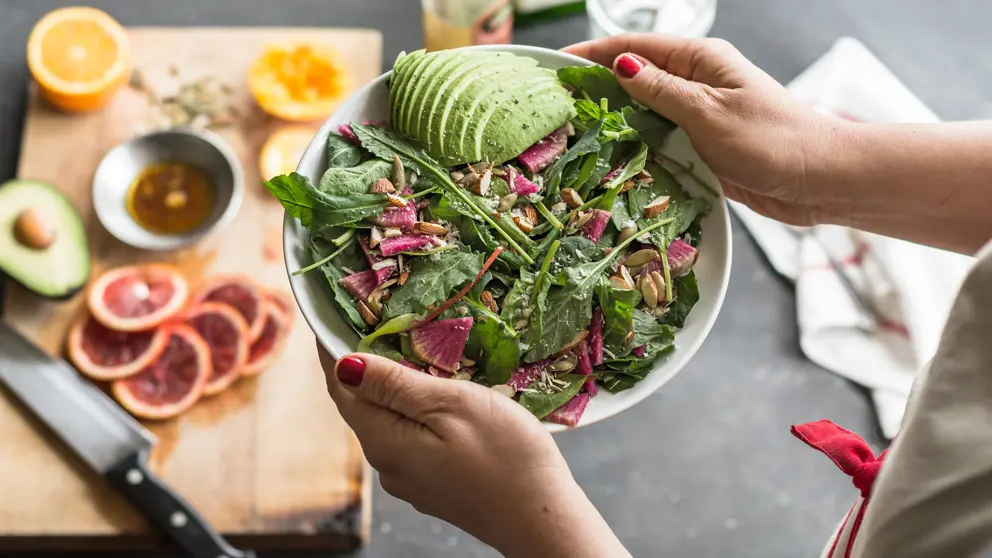If you’re not overjoyed by oranges or elated by eggplant, you’re not alone. According to Statistics Canada, just 40 percent of Canadians consume at least five servings of fruit and vegetables daily (the recommended minimum for adults is seven servings!).

Cara Rosenbloom, RD
Relatively low in calories, vegetables and fruit are filling and high in fibre, vitamins and minerals. Plus, a diet that’s rich in vegetables and fruits may help reduce your risk of heart disease and stroke.
For optimal health, your goal is to fill half your plate with vegetables or fruit at each meal. But let’s start small and look at the barriers that may be keeping you from enjoying all the benefits of vegetables and fruit.
If you just don’t like ‘em?
Sometimes an aversion may be due to childhood memories of being forced to eat vegetables you disliked. In other cases, people are turned off because they’ve only eaten overcooked or mushy veg. A properly prepared vegetable can be a game changer!
About 25 per cent of people are “supertasters,” which means that they have strong taste receptors for bitter flavours, so mild foods like broccoli taste unpleasant. Here are some suggestions to boost your vegetable intake, even for the harshest critics:
- Pair with foods you already like: Start by adding a slice of tomato to a beloved hamburger or mushrooms into an omelette.
- Play with texture: If you hate mushy vegetables, try raw, shredded, roasted or stir-fried versions instead. Love crunchy foods? Try baked kale or beet “chips.”
- Enjoy more soups: If the texture of both raw AND cooked vegetables is not your thing, puree them instead. Prepare blended soups or smoothies to increase vegetable and fruit consumption.
- Add spectacular flavor: A little olive oil and garlic, a drizzle of balsamic vinegar, a squeeze of lemon, or a handful of fresh herbs can add excitement to veggies.
And if you have no time?
If lack of time or inconvenience is keeping you from eating more vegetables and fruit, try these strategies:
- Add to breakfast: Start the day off right with avocado on toast, berries on cereal, or broccoli in an omelette.
- Enjoy more salads: If you’re dining out, salads are on almost every menu. When eating in, use pre-washed greens so convenience is not a barrier. Easy win.
- Plan in advance: Spare an hour each week to cut carrots, celery and sweet peppers and store them in the fridge for easy snacking and meal prep.
- Double up: Cooked vegetables last three or four days in the fridge, so cook extra and enjoy the leftovers for lunch.
- Grab and go: Cherry tomatoes and snap peas make great snacks, as do apples, bananas or oranges.
- Use the freezer: Frozen vegetables are as nutritious as fresh ones, and don’t wilt in the produce bin! Keep a supply of frozen broccoli, peas, leafy greens and stir-fry mixes on-hand for simple meals.
With an abundance of vegetables and fruits to choose from and many ways to prepare them, you’re bound to find something you love!
Join our groups

